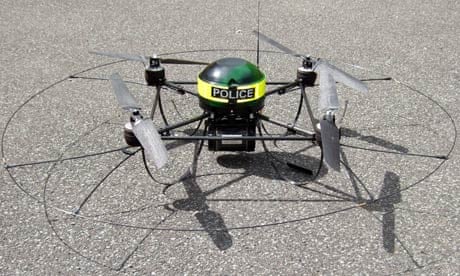For Merseyside police, the "eye in the sky" arrest was a landmark moment in policing history. The force had managed to track down and apprehend a teenager who had fled from a presumed stolen Renault Clio, senior officers revealed, by using a remote-controlled flying robot equipped with thermal imaging cameras.
But the attempt to claim credit for the UK's first arrest using a surveillance drone backfired tonight after it emerged the force itself could face prosecution because officers flew the surveillance aircraft without permission – a criminal offence.
The Civil Aviation Authority (CAA), which regulates UK airspace, confirmed it was investigating Merseyside police over the apparently unauthorised use of its drone to pursue the 16-year-old after he fled from a suspected stolen car in Bootle. It is one of three UK forces using the drones.
Officials from the regulator's Aviation Regulation Enforcement Department (ARE), which investigates and prosecutes alleged breaches of airspace, are investigating the incident, and Merseyside police has told regulators the drones have been grounded with immediate effect.
The CAA was tipped off by the Guardian after Merseyside police released a statement to the media last week declaring it had broken new ground by making an arrest using its newly acquired Unmanned Aerial Vehicle (UAV).
Police used the drone to pursue two suspects in the Clio on 26 January. Officers arrested a 20-year-old at the scene, and used the rotor-propelled drone to track the 16-year-old after he had sprinted off in the dark and hid in some bushes some 100 metres (300ft) away.
"The force is continually looking to use new technology to help in its fight against crime and these arrests demonstrate the value of having something like the UAV as a resource," Chief Inspector Nick Gunatilleke, from the force's Antisocial Behaviour Taskforce, which operates the drone, announced on Wednesday.
However, police appear to have overlooked the legislation that came into force this year, following concerns about the safety implications of flying unmanned aircraft in built-up areas.
In a statement tonight, the force said: "The CAA introduced new statutory regulations on 1 January 2010 which requires all UAVs to be licensed by the CAA before use. Since the force has known of the change in regulations all UAV flights have been suspended and will remain so until the appropriate licence has been granted."
